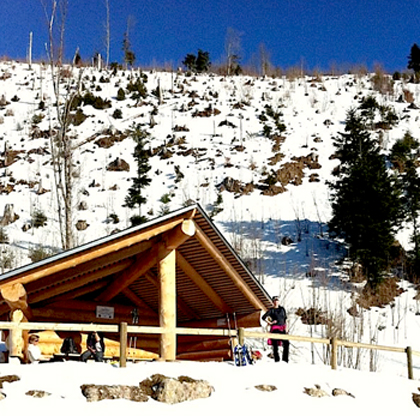HAMBURG- I’m not your typical Nordic walker; you know, those people oddly walking around with the ski-like poles? Even in its more extreme sounding form, Urban Poling, I still don’t fit the usual participant profile. I’m not over 50, I’m not trying to lose weight, and I don’t walk in a group with other polers. I once saw a trio of polers around 70 years old and they gave me a thumbs up, but no, I am not one of them. In fact, I am under 30. I’m fit. And I walk with two Chihuahuas. But although I may not fit the usual profile, or belong to the usual group, I do understand that thumbs up as I, too, pole with pride.
In the early fall of 2011, I began hiking in the Swiss Alps on a weekly basis. Being a homegrown Winnipeg prairie girl, I became instantly addicted to the Alpine landscape and the endorphin high it so loyally provided. But as the pristine peaks soon became dusted with snow, the slippery terrain added a degree of difficulty not so suitable for a solitary wanderer. So when my husband and I spent that Christmas in Davos, he thought that spikey Nordic poles would be a perfectly practical gift for a wife constantly taking off into the mountainous wilderness. At the time, I had no idea what Nordic walking was about but agreed that the poles were a great idea, if only to keep me from slipping off any icy Swiss cliffs.

It’s no surprise that I had no clue about Nordic walking at that time. Back in Canada, as well known Wolsley personality and avid poler, Sally Papso explains, “most people associate Nordic walking with old age.” This misnomer is due likely to the fact that in Winnipeg, pole walking is an activity preferred mainly by those “concerned about weight”, Papso describes, or those with “hip replacements” or “stiff knees.” Across the way here in Europe, however, outdoor sports enthusiasts like hikers and skiers have been engaging in the aerobic activity for over a decade, with many utilizing it as an off-season training regime. As for me, I’ve been doing it for just over a year, and although I have yet to encounter anyone like myself partaking in the activity, I continue to pole right along in my hot pink jacket with my little designer dogs.
That first hike with my new poles up Davos’ snow covered, sun soaked Schatzalp was certainly memorable. Rather than remembering the sun or the scenery though, it was the surprising level of exhaustion that I always tend to recall. I became much more fatigued, much more quickly than on other, even longer hikes. What I didn’t know then, and as Papso so eagerly tries to promote now, is that adding poles to regular hiking or walking really changes everything. Research shows that the striding and propelling encouraged by Nordic poles can consume up to 46% more energy than with normal walking. “Put a pair of poles in your hands” says Papso “and you’ve got a full body workout.” I didn’t realize it that first time out but I was moving so much faster and using so many more muscles than ever before (what I now call a “more bang for your buck” style of walking).

As a younger Nordic walker returning to Canada from Europe, my hope is to bring the activity of Nordic walking back to the designer dog demographic of my homeland. Nordic walking need not be only for the older crowd, but should be considered by all age groups. In fact, if you happen to see me out with my poles (and my little dogs too) take note of my fast pace, my sweaty cheeks, and my heavy breathing. You may just be enticed to try out the silly-looking workout for yourself.

—
By Jessica L. Scott-Reid
